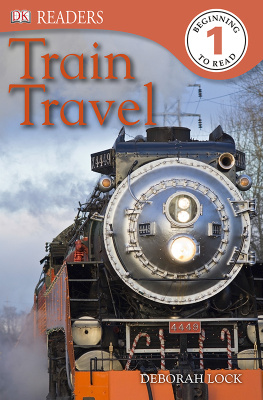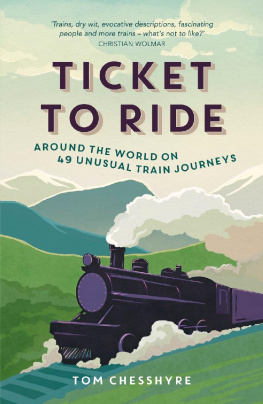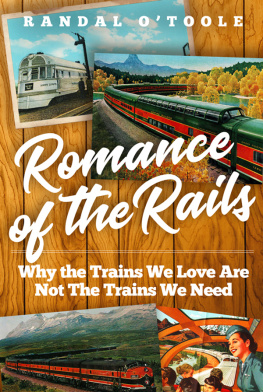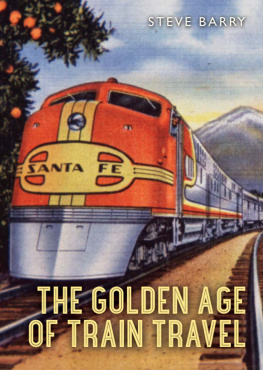
GENDER IN HISTORY
Series editors:
Lynn Abrams, Cordelia Beattie, Pam Sharpe and Penny Summerfield
The expansion of research into the history of women and gender since the 1970s has changed the face of history. Using the insights of feminist theory and of historians of women, gender historians have explored the configuration in the past of gender identities and relations between the sexes. They have also investigated the history of sexuality and family relations, and analysed ideas and ideals of masculinity and femininity. Yet gender history has not abandoned the original, inspirational project of womens history: to recover and reveal the lived experience of women in the past and the present.
The series Gender in History provides a forum for these developments. Its historical coverage extends from the medieval to the modern periods, and its geographical scope encompasses not only Europe and North America but all corners of the globe. The series aims to investigate the social and cultural constructions of gender in historical sources, as well as the gendering of historical discourse itself. It embraces both detailed case studies of specific regions or periods, and broader treatments of major themes. Gender in History titles are designed to meet the needs of both scholars and students working in this dynamic area of historical research.
Women, travel and identity
THIS SERIES ALSO INCLUDES
Myth and materiality in a womans world: Shetland 18002000
Lynn Abrams
Destined for a life of service: defining African-Jamaican womanhood, 18651938
Henrice Altink
Love, intimacy and power: marital relationships in Scotland, 16501850
Katie Barclay
Artisans of the body in early modern Italy: identities, families and masculinities
Sandra Cavallo
Modern motherhood: women and family in England, c. 19452000
Angela Davis
Jewish women in Europe in the Middle Ages: a quiet revolution
Simha Goldin
The military leadership of Matilda of Canossa, 10461115
David J. Hay
The shadow of marriage: singleness in England, 191460
Katherine Holden
Infidel feminism: Secularism, religion and womens emancipation, England 18301914
Laura Schwartz
The feminine public sphere: middle-class women and civic life in Scotland, c. 18701914
Megan Smitley
Being boys: working-class masculinities and leisure
Melanie Tebbutt
WOMEN, TRAVEL AND IDENTITY
JOURNEYS BY RAIL AND SEA, 18701940
Emma Robinson-Tomsett
Manchester University Press
Manchester and New York
distributed in the United States exclusively by Palgrave Macmillan
Copyright Emma Robinson-Tomsett 2013
The right of Emma Robinson-Tomsett to be identified as the author of this work has been asserted by her in accordance with the Copyright, Designs and Patents Act 1988.
Published by Manchester University Press
Oxford Road, Manchester M13 9NR, UK
and Room 400, 175 Fifth Avenue, New York, NY 10010, USA
www.manchesteruniversitypress.co.uk
Distributed in the United States exclusively by Palgrave Macmillan
175 Fifth Avenue, New York,
NY 10010, USA
Distributed in Canada exclusively by UBC Press
University of British Columbia, 2029 West Mall,
Vancouver, BC, Canada V6T 1Z2
British Library Cataloguing-in-Publication Data
A catalogue record for this book is available from the British Library
Library of Congress Cataloging-in-Publication Data applied for
ISBN 978 0 7190 8715 8 hardback
First published 2013
The publisher has no responsibility for the persistence or accuracy of URLs for any external or third-party internet websites referred to in this book, and does not guarantee that any content on such websites is, or will remain, accurate or appropriate.
Typeset in Minion with Scala Sans display
by Graphicraft Limited, Hong Kong
The Gallery of the H.M.S. Calcutta by J. Tissot ( 1877 ) Tate, London, 2011
The Last Evening by J. Tissot ( 1873 ), Guildhall Art Gallery, City of London
Portsmouth Dockyard, or, How I Could Be Happy with Either by J. Tissot ( 1877 ) Tate, London, 2011
The Ball on Shipboard by J. Tissot ( circa 1874 ) Tate, London, 2011
Waiting for the Train (Willesden Junction) by J. Tissot ( circa ), oil on panel, Collection of the Dunedin Public Art Gallery
Female passengers in a L.N.W.R. dining carriage ( circa 1905 ) National Railway Museum/Science and Society Picture Library
The Queen of Scots Pullman ( circa 1930 ) National Railway Museum/Science and Society Picture Library
Illustration of woman in cloche hat and dress waving handkerchief at ocean liner, cover of the October, 1927 issue of Vogue ; illustration by Eduardo Garcia Benito. Benito/Vogue/Cond Nast Archive. Copyright Cond Nast
Dine Well by L.N.E.R. ( 1935 ) National Railway Museum/Science and Society Picture Library
Express Ease () National Railway Museum/Scence and Society Picture Library
Passengers in a smoking carriage, Great Western Railway ( 1936 ) National Railway Museum/Science and Society Picture Library
Cunard USA-Canada ( circa 1920 ), Cunard Line Ltd
America this year by R.M.S. Queen Mary ( circa 1936 ), Cunard Line Ltd
Chesterfields Cigarettes advertisement ( 1928 ) White Star Magazine (November 1928 ), Cunard Archive, University of Liverpool
Woman in second-class outside stateroom on the S.S. Aquitania ( 1928 ), Cunard Archive, University of Liverpool
Cabin drawing room, S.S. Britannic (July 1930 ) White Star Magazine (July 1930 ), Cunard Archive, University of Liverpool
First-class dining car on the Great Western Railway ( 1938 ) National Railway Museum/Science and Society Picture Library
Woman being served breakfast by maid in a second-class cabin, S.S. Aquitania ( 1914 ), Cunard Archive, University of Liverpool
Cabin dining room, S.S. Britannic (July 1930 ) White Star Magazine (July 1930 ), Cunard Archive, University of Liverpool
Number of adult female emigrants per , male emigrants 1877 and 1891 1900
Female ocean journeyers departing from Liverpool, 1890 , 1910 and 1930
Destination of women journeyers from Liverpool, 1890 , 1910 and 1930
Distribution of discourses according to type of journey
Distribution of discourses in published and unpublished journey accounts
Distribution of discourses in male and female journey accounts
This project began many years ago when Professor Amanda Vickery suggested I contact Dr Alex Windscheffel at Royal Holloway, University of London about the possibility of supervising my Ph.D. I am extremely grateful for her recommendation. Over coffee at Starbucks on Londons Euston Road, Alex and I thrashed out my Ph.D. topic. I was fortunate to get funding from the Arts and Humanities Research Council that enabled the completion of this project as a thesis. I am supremely grateful to Alex and to all of the academics I worked with during that time for their robust comments on my work, insights and support, but particularly Professor Penelope Corfield, Dr Emma Jones and Dr Nicola Phillips. I am now also extremely grateful to all of the staff at Manchester University Press who have helped produce this book.







